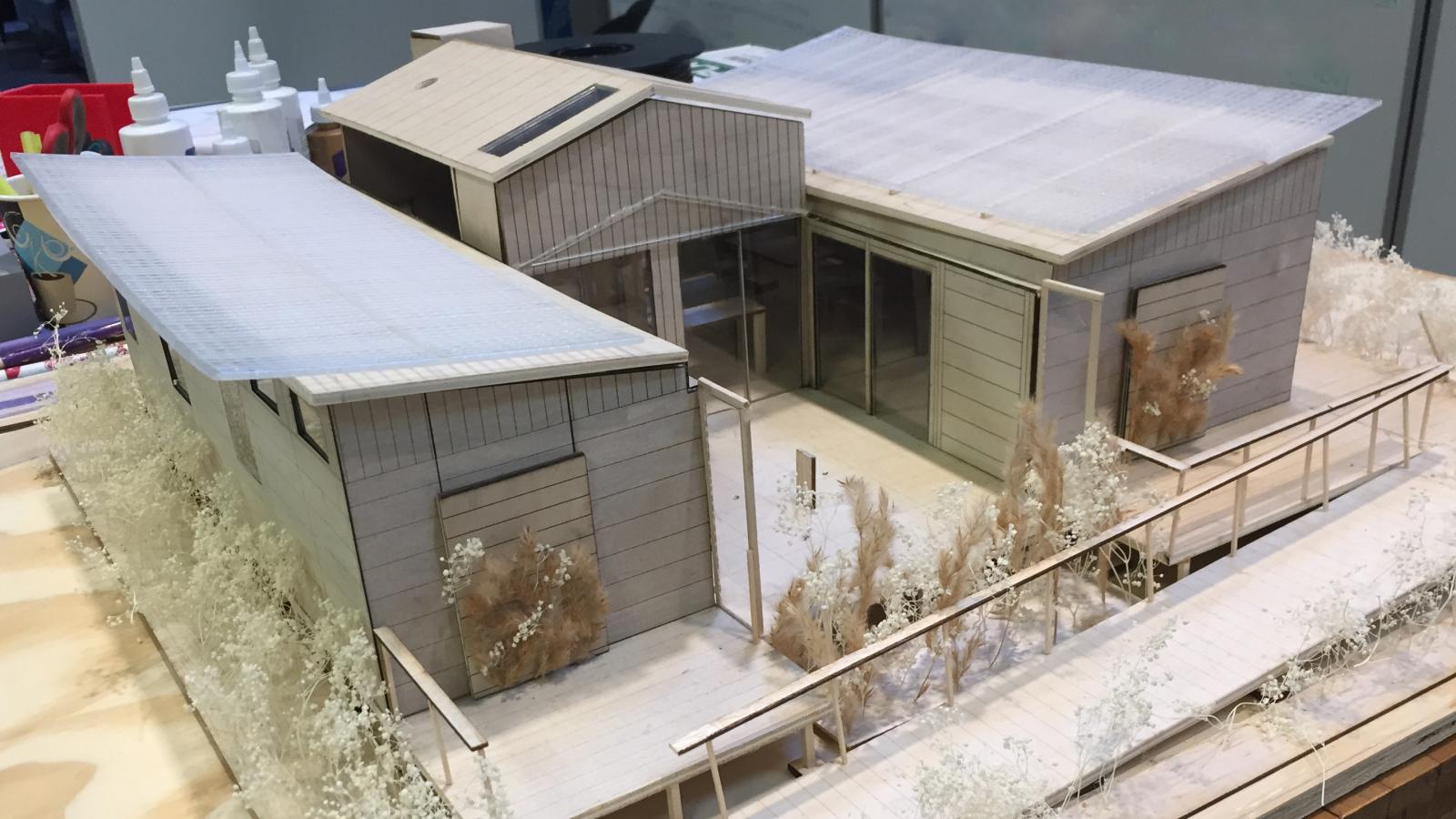After a brief hiatus from the competition arena, the University of Maryland returns this October as one of thirteen teams participating in the U.S. Department of Energy Solar Decathlon 2017 in Denver, Colorado. Led by Professor of Architecture Garth Rockcastle, Architecture Lecturer Mike Binder, Professor of Chemical and Biomolecular Engineering Ray Adomaitis and former Architecture Librarian, Patricia Kosco Cossard, UMD students from disciplines across campus begin construction this spring on their entry, [re] ACT (short for “responsive adaptable climate technology”). [re] ACT promises to transfer—and transform—waste into resources through a central, north/south “spine,” while integrating indoor and outdoor spaces for flexible living and performance.
[re] ACT is not a one-off prototype; it is an homage to the 20th century Sears Catalog Home with a 21st century bent, designed as a “kit of parts.” The [re] ACT concept is a high-powered configuration of state-of-the-art systems that can be arranged to create a near endless catalog of building sizes and forms, adaptable to different weather conditions, landscapes, populations and resource availability. Housing features will include a smart core, which is capable of harnessing the sun for energy, cooking and even drying dishes; a central courtyard with retractable walls and roof; and a whole-house “brain” that anticipates weather patterns and adjusts the home’s operations accordingly. The balance of comfort and zero net waste positions [re] ACT as a potential market-ready offering. And, while [re] ACT aims to transform the residential construction industry, it was also conceived with a socially-conscious twist: the entry was designed specifically to address the dearth of decent, affordable housing available to Native American Tribes. Working closely with two separate tribes in Arizona and Minnesota, team leaders hope to deliver a product that fosters empowerment, comfort and independence.


